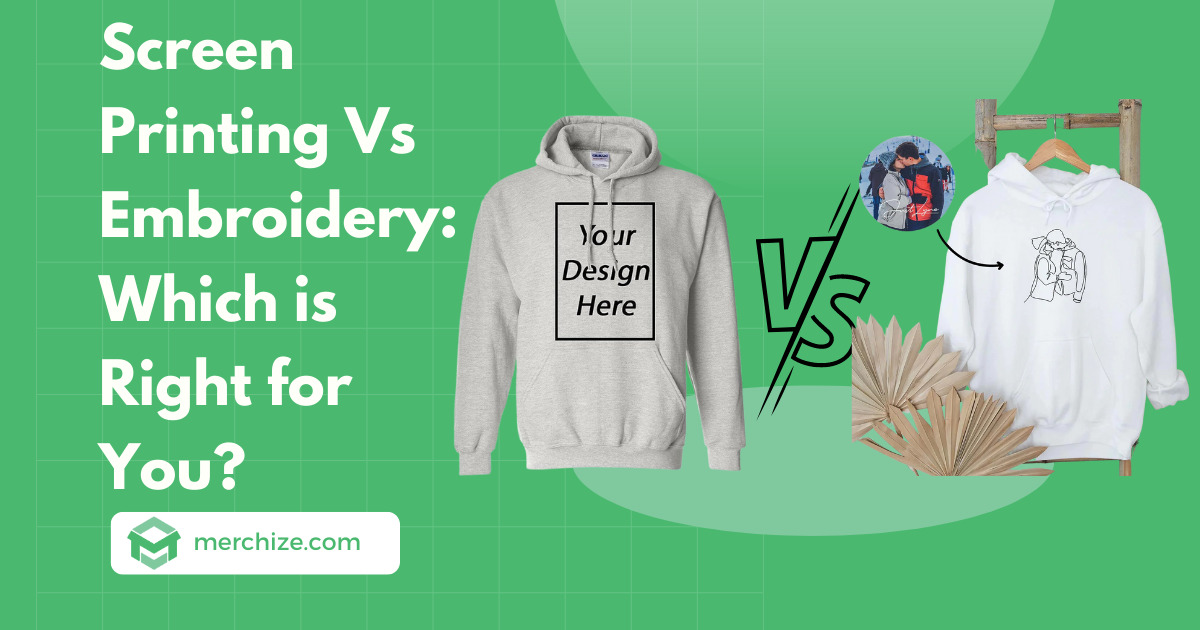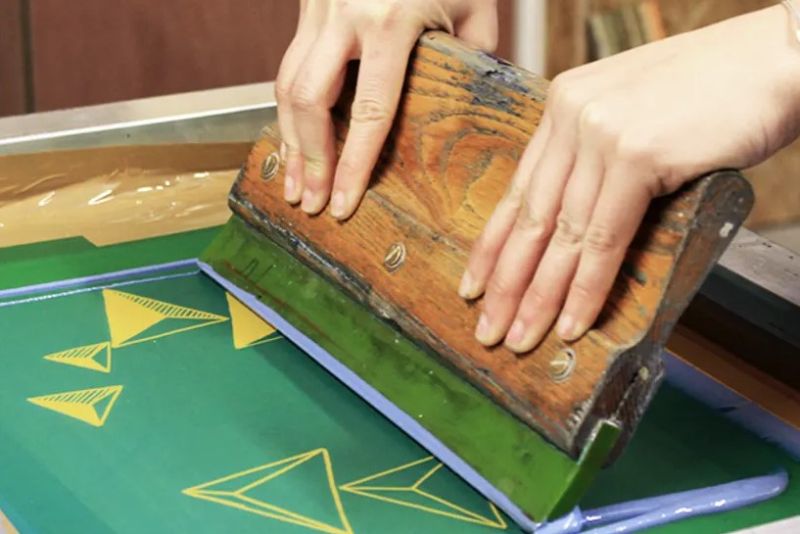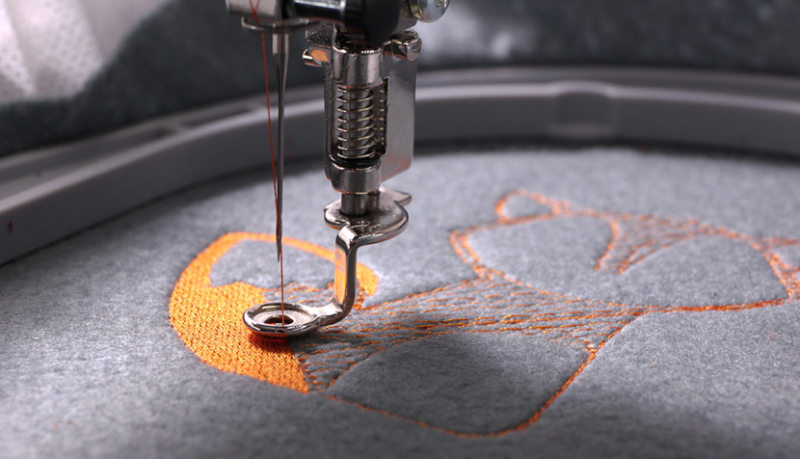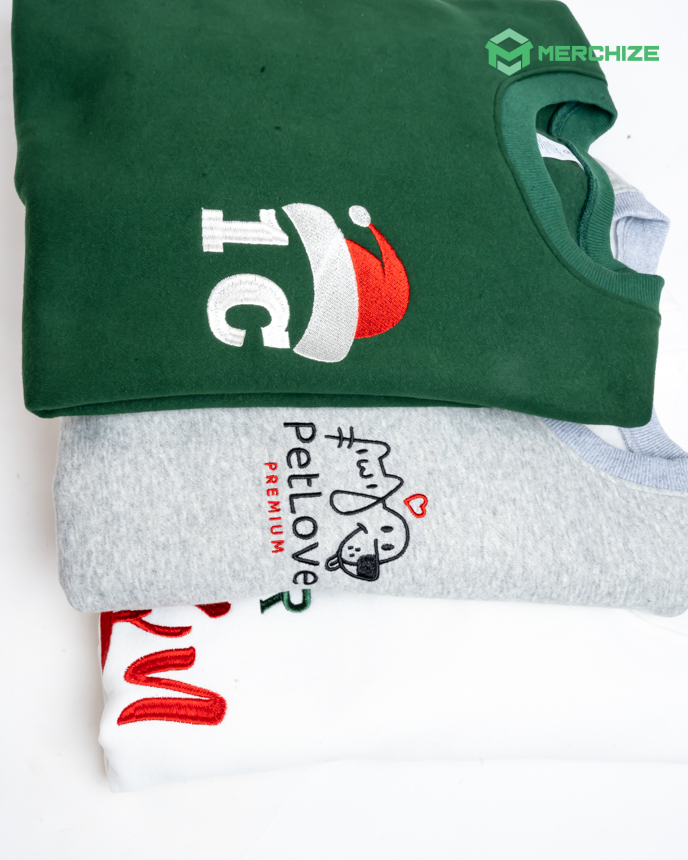Contents
In today’s ever-changing world of fashion and design, the techniques of screen printing and embroidery are super important. When businesses are working hard to achieve uniqueness and precision, picking between these two techniques can be a big deal. This article delves into the nitty-gritty of both screen printing and embroidery, shining a light on what they’re used for, how long they last, how much they cost, and how long they take to make, enabling readers to make an informed choice.
What is Screen Printing?
Screen printing is a super cool printing method that uses a mesh to transfer ink onto a substrate, except in areas made impermeable to the ink by a blocking stencil. It is a process for applying ink to a substrate like t-shirts, by squeezing it tthrough a carefully designed stencil. The stencil is made by covering up specific areas of the substrate that are not intended to be printed, so the ink only goes where you want it.
This printing method is awesome for loads of different designs, offering substantial creativity and adaptability. Plus, it’s pretty cheap, making it an appealing option for large orders. But, heads up, screen printing can take a bit of elbow grease and can be a tad slow. It might not last as durable as embroidery, but the colors pop and it’s a top pick for lots of projects. Everyone in the fabric world loves it because you can produce intricate patterns and vibrant hues.
What is Embroidery?
Embroidery is a super cool craft involving the decoration of fabric or other materials by using a needle to apply thread or yarn. The threads are carefully stitched in different patterns to show the design you want, and you can even add materials like pearls, beads, quills, and sequins to make it feel and look even cooler.
People love embroidery ’cause it can make detailed and fancy designs that pop out and look 3D. It stands as a more durable process compared to many other printing techniques, offering longevity and a rich tactile quality.
Even though it looks fancy and is strong, embroidery can be a bit pricey and take more time, especially for large orders. But, because it’s both stylish and long-lasting, folks still love using embroidery to make their clothes unique, show off brand logos, or add a splash of art to fabric stuff. Whether done by hand or with high-tech embroidery machines, this old-school art is still all about style and creativity.
Custom embroidery allows you to add personalized designs and details to clothing, hats, blankets, and more. From names and initials to meaningful images and creative patterns, custom embroidery makes pieces special and unique.
Comparison of screen printing and embroidery
The world of screen printing and embroidery is super cool and both vast and offers unique benefits that fit what you might be into. Here’s a side-by-side look at what each one’s got going on:
Feature | Screen Printing | Embroidery |
Cost | Less expensive | More expensive |
Durability | Less durable | More durable |
Applications | Large orders, large designs, thin/stretchy garments | Small orders, intricate designs, heavier garments |
Versatility | More versatile in design, suitable for casual wear | Limited applications, suitable for formal wear |
Time to Produce | Less time-consuming | More time-consuming |
Versatility
When it comes to versatility, screen printing and embroidery present clear perks that serve different needs and applications.
- Screen Printing: Screen printing is great for how it adjusts, letting you make detailed looks. You can use it on loads of stuff, like clothes, bags, hats, mugs, and more, making it a top pick for all sorts of design uses. This makes Screen Printing become a cool choice for folks wanting to make colorful and varied prints.
- Embroidery: Embroidery, with its fancy 3D look, has its limits. It’s mostly used for clothes, giving them that classy touch and making them stand out. Its range might not be as big as screen printing, but the art options in its lane are cool and can result in truly unique and exquisite pieces.
Cost
The price tag is a big deal when picking between screen printing and embroidery for making cool clothes or accessories. Business folks and designers must weigh the financial aspects carefully, ’cause adding personal touches ups the price.
- Embroidery: Embroidery usually comes with a set price, no matter the number of colors used in the design. You can slap in up to 15 colors, can typically be incorporated at little to no extra cost, providing flexibility without a significant increase in price. But, since there’s a lot of fancy stitching going on, embroidery can end up costing a bit more, especially for small batches or super detailed designs.
- Screen Printing: On the flip side, screen printing costs canvary greatly depending on factors like design complexity, size, and the number of colors involved. Since every color needs its own screen, the price can shoot up if you use multicolored designs. But, big designs or bulk orders can make screen printing the cheaper route. Additionally, choosing a local company for screen printing might help reduce delivery costs, further enhancing its cost-effectiveness.
Deciding between embroidery and screen printing when thinking about money involves a lot of stuff like what your design’s like, how big your order is, how many colors you’re using, and the quality of the stuff you’re printing on.
Durability
Durability is a big deal when you’re picking between screen printing and embroidery, whether you’re a business or just an everyday person. Both have their cool features, but when it comes to lasting long, they’re pretty different.
- Embroidery: People love embroidery because of its durability. The embroidery design’s sewn right into the fabric, so it pops out and looks 3D. Plus, the strong thread gives it a neat shine that catches the eye. If the stitching is good, embroidery doesn’t fade, crack, or show damage over time. Take care of it—like making sure it doesn’t get snagged—and it’ll look good for ages. It feels solid and has a fancy look that’s made to last.
- Screen Printing: On the other hand, screen printing just prints the design on the surface of the fabric. While initially vibrant, these designs may crack and fade as time goes on, especially if not cared for properly. Mistakes in washing or ironing, and you could mess it up quickly. The flat nature of a screen-printed design doesn’t provide the same depth or allure as embroidery and may not stand the test of time as well.
Applications
They’re both cool for different reasons and work better on different kinds of clothes and gear.
Embroidery
- Best for Heavier Garments: Embroidery excels on robust, high-quality fabrics. If you put it on thin stuff, it can get all wavy and weird, so it’s making embroidery more suitable like polos, jackets, and hats.
Ideal for Uniforms: Because it’s tough and looks snazzy, embroidery’s the way to go for uniforms, work clothes, or anything you want to last a while. It adds an air of professionalism and class. - Small Orders and Intricate Designs: If you’ve got a small batch or a super detailed design, embroidery’s your best bet because of its unique look and feel.
Screen Printing
- For the Soft and Stretchy: Screen printing’s your friend when it comes to tees, hoodies, and anything soft or stretchy. It keeps everything looking smooth and neat.
- Large Logos and Designs: If you want a huge design, especially on the back of a garment, screen printing is often the most suitable choice. Its ability to cover large areas seamlessly gives it an advantage.
For Huge Batches and Regular Washes: If you’re ordering in bulk or garments meant to be washed frequently, screen printing is a winner. It’s both budget-friendly and super versatile.
The bottom line
In summary, screen printing and embroidery offer two very distinct finishing options for apparel and accessories. Screen printing involves applying ink directly onto the fabric surface to create bold, graphic designs. It excels at producing high-quality prints with flat, opaque color at high production volumes. Embroidery uses stitching to add dimension and texture. It can create 3D logos, designs, and lettering with a softer handfeel. Embroidery is ideal for adding small logos or monograms, particularly on woven items.
When choosing between screen printing vs embroidery, consider the complexity of your design, production run size, and product use case. Screen printing is better for simple spot color graphics or photographic images printed in large quantities. Embroidery works well for delicate fabrics, small detail, high-end branding, and short runs. Its softer handfeel and ability to stand out on knits also make it ideal for cotton t-shirts and uniforms. For the best durability on frequently washed items, opt for embroidery over screen printing.
In conclusion, while both techniques permanently decorate a garment, screen printing offers bold pops of color and works best for high volume orders. Embroidery provides texture and dimension, especially for branding must-haves like polos and hats. Keep these key differences in mind when selecting the best decoration technique for your apparel and merchandise.
If you’re looking for a one-stop solution that offers great printing techniques tailored to your specific needs, Merchize – Print On Demand and Fulfillment service could be the perfect partner to bring your vision to life.








